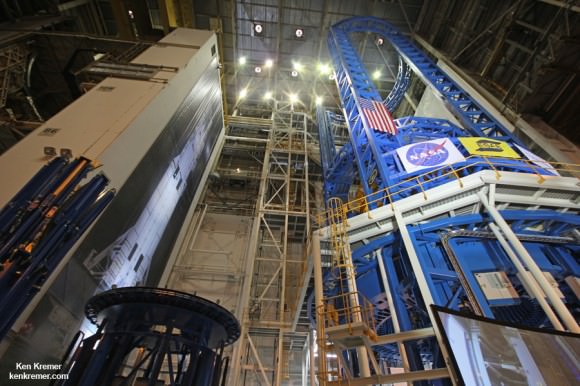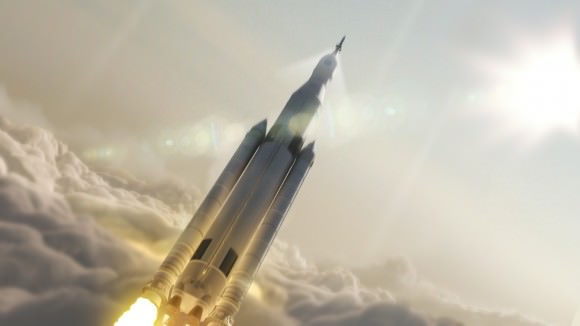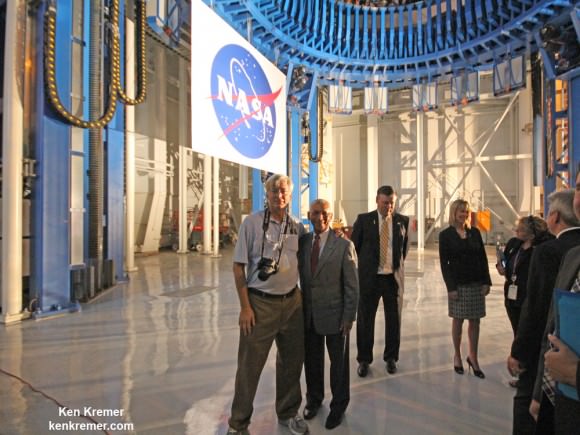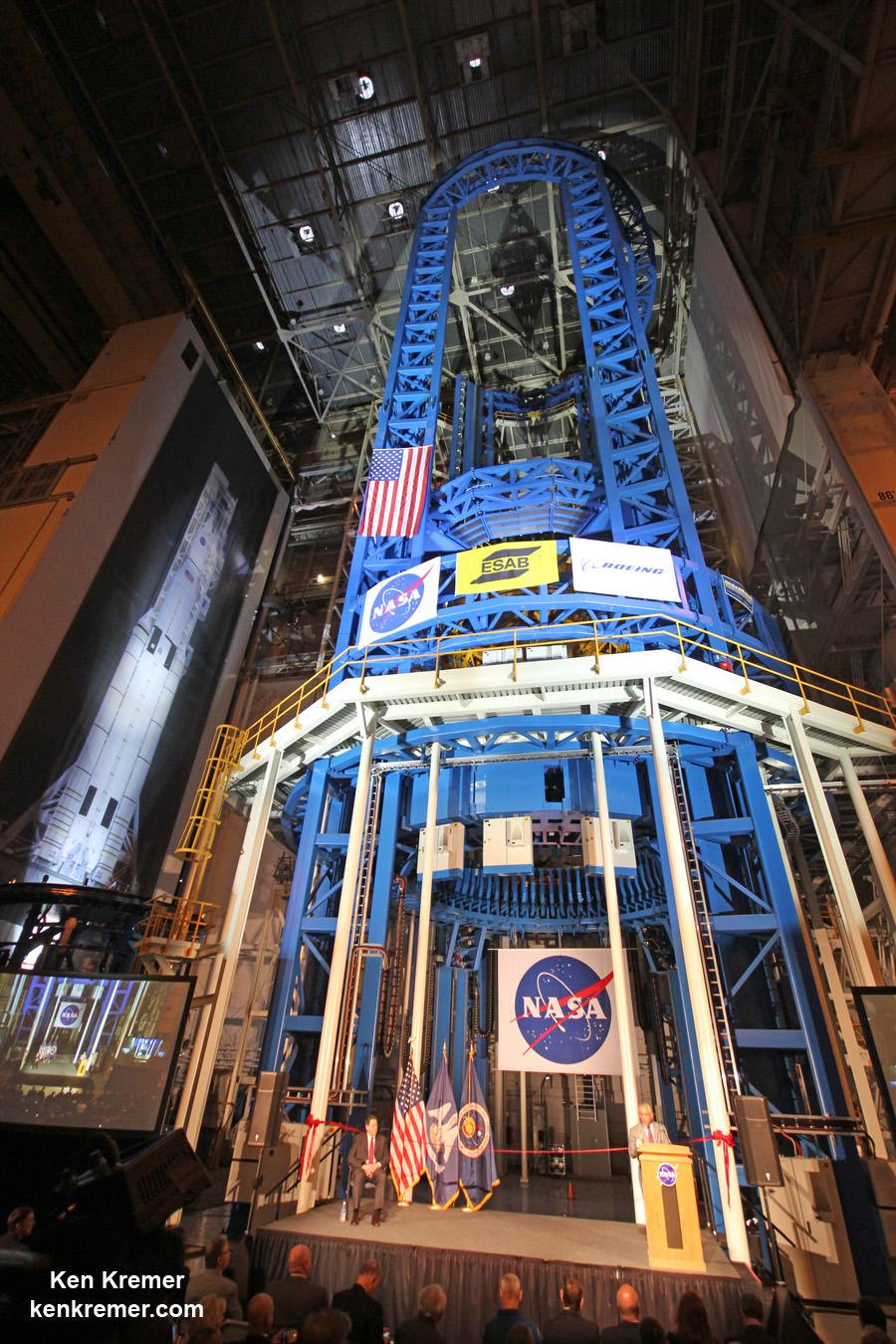MICHOUD ASSEMBLY FACILITY, NEW ORLEANS, LA – NASA Administrator Charles Bolden officially unveiled the world’s largest welder to start construction of the world’s most powerful rocket – NASA’s Space Launch System (SLS) rocket – at NASA’s Michoud Assembly Facility in New Orleans on Friday, Sept. 12, 2014.
Administrator Bolden was personally on hand for the ribbon-cutting ceremony at the base of the huge welder at Michoud’s Vertical Assembly Center (VAC).
The welder is now officially open for business and will be used to manufacture the core stage of the SLS, NASA’s mammoth heavy lift rocket that is intended to take humans to destinations far beyond Earth and farther into deep space than ever before possible – to Asteroids and Mars.
“This rocket is a game changer in terms of deep space exploration and will launch NASA astronauts to investigate asteroids and explore the surface of Mars while opening new possibilities for science missions, as well,” said NASA Administrator Charles Bolden during the ribbon-cutting ceremony at Michoud on Sept. 12.
“The Road to Mars starts at Michoud,” said Bolden, at the welding tool ceremony attended by Universe Today.
The SLS is designed to launch astronaut crews aboard NASA’s next generation Orion deep space capsule concurrently under development.
The state-of-the-art welding giant stands 170 feet tall and 78 feet wide. It completes a world-class welding toolkit that will be used to assemble pieces of the SLS core stage including domes, rings and barrels that have already been manufactured. It will tower over 212 feet (64.6 meters) tall and sports a diameter of 27.6 feet (8.4 m).

The core stage stores cryogenic liquid hydrogen and liquid oxygen. Boeing is the prime contractor for the SLS core stage.
The SLS core stage builds on heritage from NASA’s Space Shuttle Program.
The first stage propulsion is powered by four RS-25 space shuttle main engines and a pair of enhanced five segment solid rocket boosters (SRBs) also derived from the shuttles four segment boosters.
As I reported recently, NASA managers formally approved the development of the agency’s mammoth Mars rocket after a thorough review of cost and engineering issues.
“The SLS Program continues to make significant progress,” said Todd May, SLS program manager.
“The core stage and boosters have both completed critical design review, and NASA recently approved the SLS Program’s progression from formulation to development. This is a major milestone for the program and proof the first new design for SLS is mature enough for production.”
The maiden test launch of the SLS is targeted for November 2018 and will be configured in its initial 70-metric-ton (77-ton) version, top NASA officials announced at a briefing for reporters on Aug. 27.

The decision to move forward with the SLS comes after a wide ranging review of the technical risks, costs, schedules and timing known as Key Decision Point C (KDP-C), said Associate Administrator Robert Lightfoot, at the briefing. Lightfoot oversaw the review process.
“After rigorous review, we’re committing today to a funding level and readiness date that will keep us on track to sending humans to Mars in the 2030s – and we’re going to stand behind that commitment,” said Lightfoot. “Our nation is embarked on an ambitious space exploration program.”
Stay tuned here for Ken’s continuing Earth and Planetary science and human spaceflight news.


